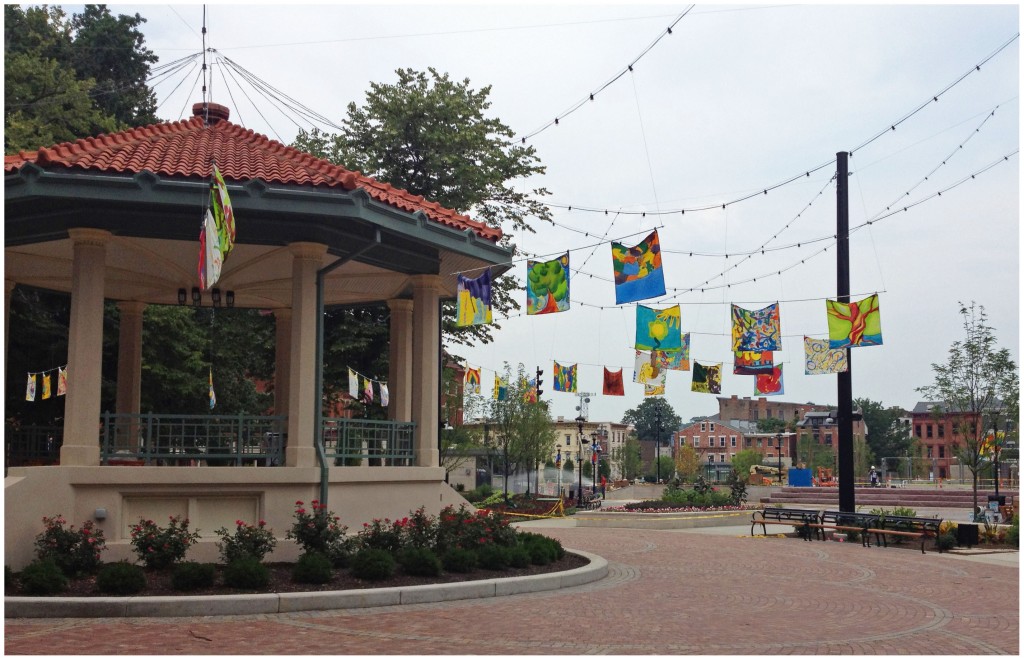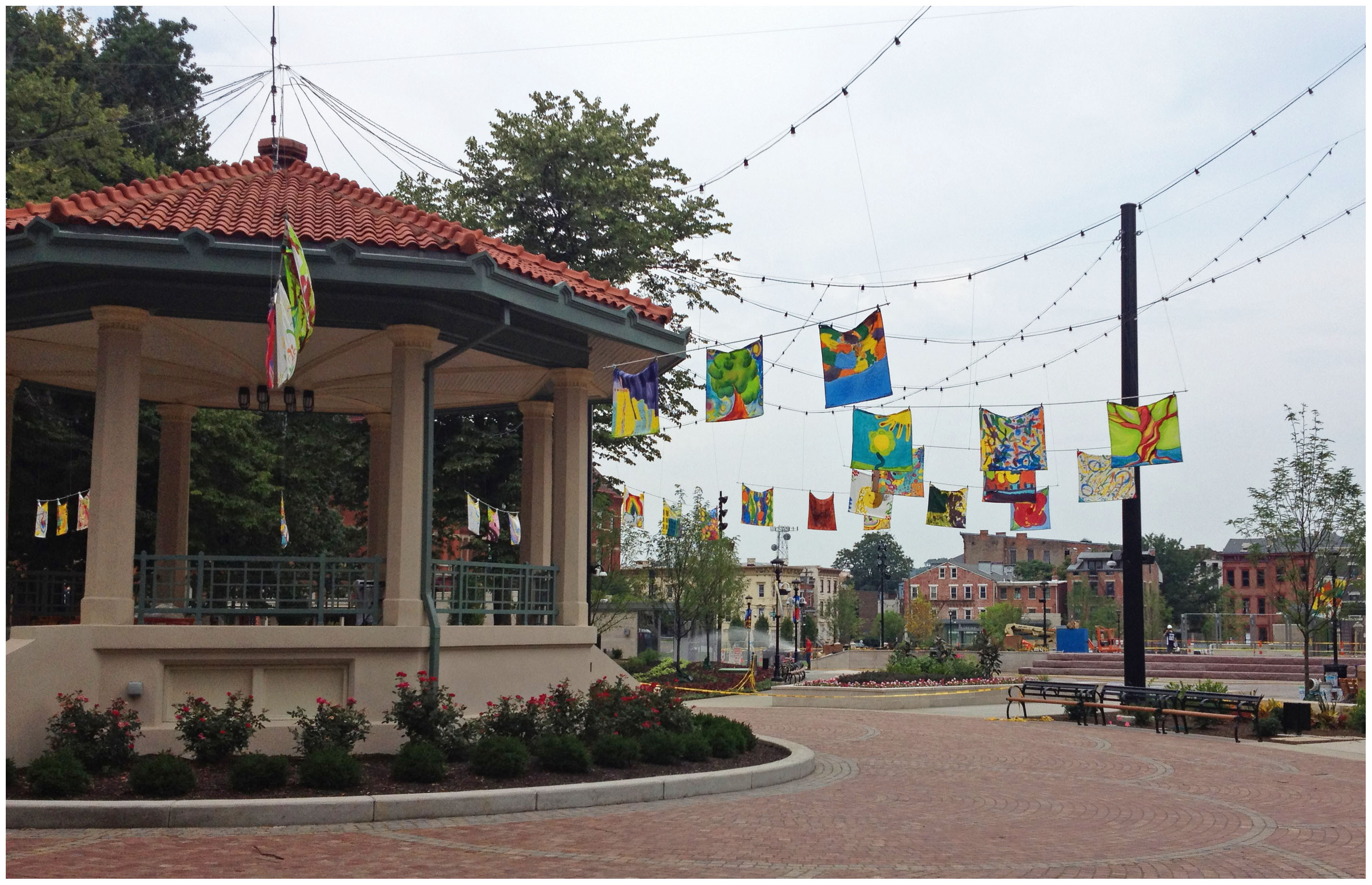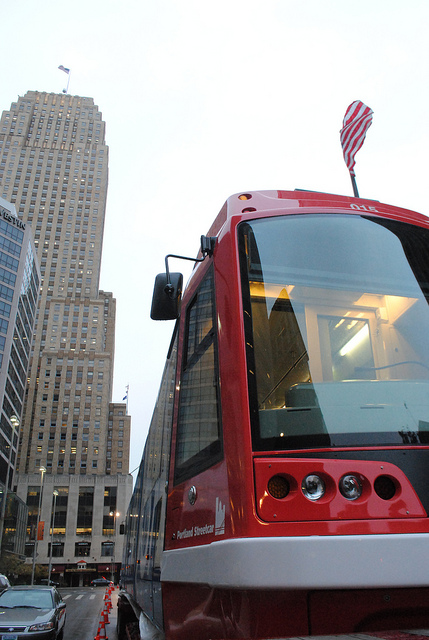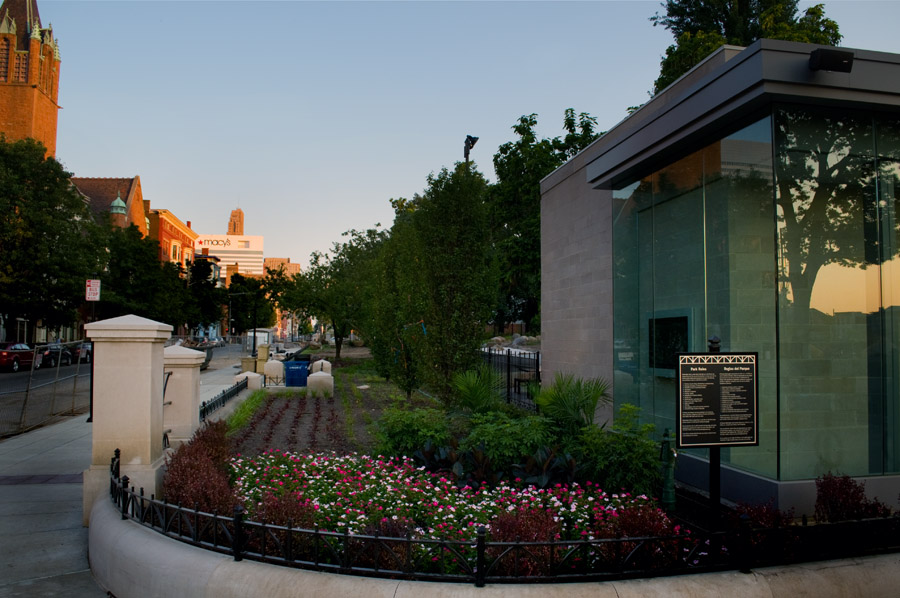Hundreds of brightly colored squares of silk ripple in the breeze amid the trees of the newly renovated Washington Park. Each square tells a story of a person or organization somehow intertwined in the past, present, or future of the Over-the-Rhine community. Furthermore, the OTR Flags project is the first public event celebrating the re-opening of the 157-year-old park.
Though the grand reopening of the park is heralded as a triumph, it brings with it lingering memories of crime, homelessness, and drug dealing that plagued the area over recent decades. Some organizations and people had trepidation surrounding the renovation – that not everyone would get to share in the joy of the new space.

OTR Flags installation in Washington Park. Photograph by Jenny Kessler for UrbanCincy.
In an effort to help bridge the proverbial divide between old and new residents, local artist and resident Angela Morrow teamed with Joan Kaup in 2009 to create the public art project with the goal of uniting the diverse neighbors of Over-the-Rhine and encouraging communal ownership of Washington Park.
“There’s still some tension, with old residents, new residents, black and white, rich and poor,” said Morrow. “Art is a safe, positive way to create dialogue. We wanted to bring everyone together and start the healing process.”
Inspired by The Gates installation in New York City’s Central Park, the team developed a plan to unite organizations, artists, and neighbors by creating personalized silk flags to hang in Washington Park. Some 57 organizations contributed in some way – by being a media sponsor, contributing financially, or sponsoring a flag.
Morrow served as the lead artistic director, Kaup worked with development and community outreach, and Nicole Ware, CEO of Emanuel Community Center, oversaw the financials. A committee with representatives from ArtsWave, ArtWorks, Cincinnati Arts Association, 3CDC, Drop Inn Center, OTR Community Council, OTR Community Housing, Society for the Preservation of Music Hall, and YMCA met together to match 17 local artists with 30 neighborhood organizations that combined to create 26 flags.
The artists, ranging from 15-year-old Zoe Kolstaza, a student at the School for Creative & Performing Arts, to Matt Dayler of public art company Higher Level Art, were paid a stipend for their work. Each artist met with eight to ten members of their respective organization and participated in a facilitated discussion about their involvement in Over-the-Rhine.
“This isn’t a marketing ploy for companies,” Kaup explained. “The point of the flags is to tell the story of each participant.”
The final piece of the project came from public workshops where area residents could paint smaller, individual flags illustrating their involvement with the neighborhood. Workshops were held at the Drop Inn Center, Second Sunday on Main, Art Academy of Cincinnati, and Emanuel Community Center.
“At the Drop Inn Center charrette, people were so excited to be able to give something and be a part. Fifteen flags were painted that day,” Morrow told UrbanCincy. “People from the Drop Inn, from the neighborhood, even from an outside group that does ministry in Over-the-Rhine stopped by. The Drop Inn members got to show them how to paint for the first time, they got to give something back, and there was no power play. Everybody was there painting and learning together.”
More than $64,000 was raised with sponsorship money, and after expenses, an estimated $10,000 will be left over. Organizers say they plan to use the extra money to sponsor programming for Washington Park.
OTR Flags will remain on display in Washington Park through September 2012, and a reception will be held to commemorate the exhibit on July 19 at 5pm.
Jenny Kessler is a former UrbanCincy writer and now works for ArtsWave as a Communications Assistant.





